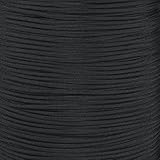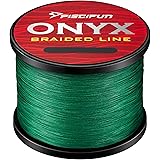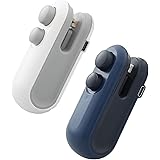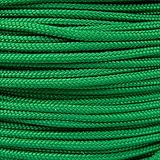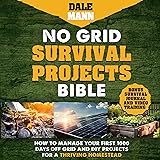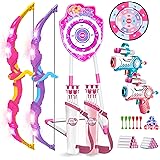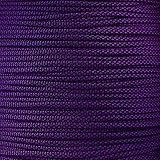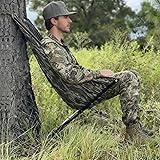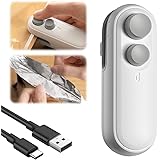There’s a unique satisfaction that comes from holding a truly well-crafted knife, especially one that has been carefully personalized or meticulously maintained. It’s more than just a tool; it’s an extension of your passion for quality and functionality. You might have found yourself admiring a classic design, perhaps a Buck knife, and wondering how to make it uniquely yours, or simply how to keep it performing at its absolute best. As showcased in the accompanying video, the journey of knife customization and dedicated maintenance is a rewarding endeavor that transforms a simple blade into a treasured possession.
The speaker in the video touches upon several key aspects of this journey, from showcasing a collection of classic Buck knives to detailing the ongoing “Scout Five” repair project. This involves specific modifications, rigorous sharpening, and careful conditioning, all of which underscore the dedication involved in preserving and enhancing these invaluable tools. Whether you’re an avid collector, a seasoned outdoors enthusiast, or simply appreciate fine craftsmanship, understanding the nuances of knife materials, modification techniques, and consistent care is paramount.
The Enduring Appeal of Buck Knives: A Legacy of Craftsmanship
For generations, Buck knives have stood as a symbol of American craftsmanship and rugged reliability. Their fixed blades, in particular, evoke a sense of tradition and timeless design that appeals to knife enthusiasts worldwide. The video highlights several iconic models, including the classic original phenolic handle versions and the more modern Pro Series, featuring advanced materials like Micarta and S35VN steel. The Buck 110 folder, for instance, revolutionized the knife industry, demonstrating that a folding knife could be as strong and reliable as a fixed blade.
Furthermore, the 119 Pro Series, a standout mentioned in the video, exemplifies how Buck marries classic aesthetics with contemporary performance. By upgrading to premium blade steels like S35VN and durable handle materials such as Micarta, Buck ensures its legacy continues to meet the demands of modern users. The 117 Brahma, another fine example from the collection, further illustrates the brand’s commitment to diverse and functional fixed blade designs. These knives aren’t just for display; they’re built to be used, trusted, and, as the video demonstrates, often customized to personal preference.
Mastering Knife Customization: Beyond the Factory Finish
The allure of customizing a knife lies in its ability to transform a mass-produced item into a truly personal tool. This process allows owners to enhance ergonomics, improve aesthetics, and even boost performance characteristics. Whether it’s a full-scale rebuild like the “Scout Five” project or subtle tweaks, knife customization offers a creative outlet that results in a unique piece tailored exactly to your needs and tastes. It’s about making a statement with your gear, ensuring it feels right in your hand and reflects your individual style.
Customization often begins with the handle, a crucial component for grip and comfort. The video mentions classic phenolic handles and the modern Micarta. However, the possibilities extend far beyond these. Blade finishes, sheath modifications, and even minor adjustments to blade geometry can significantly alter a knife’s character and utility. The goal is always to improve upon the factory standard, making the knife more efficient, comfortable, or visually striking for its owner.
Handle Materials: Phenolic, Micarta, and Beyond
The choice of handle material dramatically impacts a knife’s feel, durability, and appearance. Phenolic handles, often seen on classic Buck knives, are known for their robust nature and timeless, elegant look. Composed of resin-impregnated paper or fabric, they offer excellent stability and resistance to moisture, making them a practical choice for everyday use and collectors alike. Their smooth, polished surface contributes to their iconic appeal, providing a comfortable and secure grip.
Conversely, Micarta, featured on the 119 Pro Series, represents a step forward in material science for knife handles. This composite material, typically made from layers of linen, canvas, or paper soaked in thermosetting resin, is renowned for its exceptional durability, lightweight properties, and superior grip, especially when wet. Micarta can be textured for enhanced purchase and comes in a wide array of colors and patterns, making it a popular choice for custom knife builds. Beyond these, materials like G10, various hardwoods, and even natural materials such as bone or antler offer even more diverse options for achieving that perfect personalized feel and aesthetic.
Blade Steels: Understanding Performance Upgrades
The heart of any knife is its blade, and the type of steel used dictates much of its performance. The video specifically mentions S35VN steel, an advanced stainless steel frequently chosen for premium knives due to its balanced properties. S35VN offers excellent edge retention, allowing a blade to stay sharp through prolonged use, and impressive toughness, reducing the likelihood of chipping or breaking. Moreover, its corrosion resistance makes it a practical choice for various environments, ensuring longevity and ease of maintenance.
The SOG ToothLock, also highlighted in the video, features San Mai VG10 steel, often associated with high-quality Japanese knives, particularly those from Seki, Japan. VG10 is known for its ability to take a very fine edge and hold it well, offering a good balance of hardness and toughness. San Mai construction typically involves a VG10 core sandwiched between layers of softer, tougher stainless steel, providing a blend of superior cutting ability with increased overall durability. Understanding these differences allows enthusiasts to appreciate the engineering behind each blade and choose steels best suited for specific tasks.
Essential Knife Maintenance: Keeping Your Blades in Peak Condition
A well-made knife deserves meticulous care to ensure its longevity and peak performance. The video underscores this commitment to knife maintenance, showing the ongoing sharpening, polishing, and conditioning of the “Scout Five” project. Regular maintenance not only preserves the aesthetic appeal of your knife but, more importantly, ensures its functional reliability when you need it most. It’s an ongoing process that connects the owner to their tool, fostering a deeper appreciation for its craftsmanship.
From the initial sharpening to the final conditioning of the leather sheath, each step plays a vital role. Neglecting maintenance can lead to dull blades, corroded surfaces, or dried-out handles and sheaths, ultimately compromising the knife’s integrity and safety. By dedicating time to these essential tasks, you’re investing in the life of your blade and ensuring it remains a trusted companion for years to come.
The Art of Sharpening and Stropping
Achieving a truly sharp edge is both an art and a science, requiring patience and a methodical approach. Sharpening involves removing minute amounts of steel to create a consistent angle on both sides of the blade, eventually forming a burr along the edge. Tools like whetstones, ceramic rods, or diamond plates are used progressively, moving from coarser grits to finer ones to refine the edge. Maintaining a consistent angle throughout the process is critical for optimal sharpness and edge stability.
Once the blade is sharpened, stropping takes the edge to the next level. This process uses a leather strop, often charged with an abrasive compound, to remove any micro-burrs left from sharpening and to polish the very apex of the edge. The action is similar to sharpening but with much lighter pressure and only in a trailing edge motion. Stropping results in an incredibly fine, mirror-polished edge that cuts with exceptional ease and precision, often capable of effortlessly slicing paper or shaving hair.
Polishing and Protecting Your Blade and Bolster
Beyond sharpening, the aesthetic maintenance of a knife involves polishing its metal components. The video mentions polishing the bolster and handguard, which not only enhances their appearance but also helps protect them from corrosion and tarnish. Bolsters, often made of brass, nickel silver, or stainless steel, can develop a patina or show scuffs over time. A good polish restores their original luster, adding to the knife’s overall beauty.
Using appropriate polishing compounds and soft cloths, you can gently buff these areas to a brilliant shine. For blades, especially those made of stainless steel, polishing can help remove minor surface scratches and create a protective barrier against environmental elements. This attention to detail reflects a deep respect for the knife’s design and material, preserving its value and visual appeal.
Leather Care: Preserving Sheaths and Lanyards
For knives housed in leather sheaths or adorned with leather lanyards, proper leather care is just as crucial as blade maintenance. Leather, being a natural material, can dry out, crack, or stiffen over time, especially with exposure to the elements. The video highlights conditioning the leather, a vital step to keep it supple and durable. A well-maintained leather sheath not only looks better but also provides superior protection for the blade and comfort for the user.
Regular application of a quality leather conditioner, such as mink oil, neatsfoot oil, or a specialized leather balm, helps to moisturize and protect the material. This prevents premature aging, restores natural oils, and enhances its water resistance. Ensuring your leather accessories are well-cared for prolongs their life and maintains the overall integrity of your knife carrying system, offering both aesthetic pleasure and reliable function.
The Everyday Carry (EDC) Experience: Practicality Meets Personal Preference
The concept of Everyday Carry (EDC) centers around the essential items you consistently carry with you to navigate daily life, and for many, a reliable knife is at the top of that list. The video briefly showcases the SOG ToothLock, a prime example of a well-regarded EDC folding knife known for its San Mai VG10 steel blade and robust construction from Seki, Japan. Choosing an EDC knife is a highly personal decision, balancing factors like size, weight, blade length, lock mechanism, and local legality.
A good EDC knife is more than just a tool for opening packages; it’s a versatile companion for countless small tasks that arise throughout the day. From cutting cords to preparing snacks or even basic self-defense, its utility is undeniable. Consequently, the principles of knife customization and maintenance apply equally to EDC knives. A well-chosen, well-maintained, and perhaps slightly personalized EDC knife becomes an indispensable part of your daily kit, ready for whatever challenges come your way.


